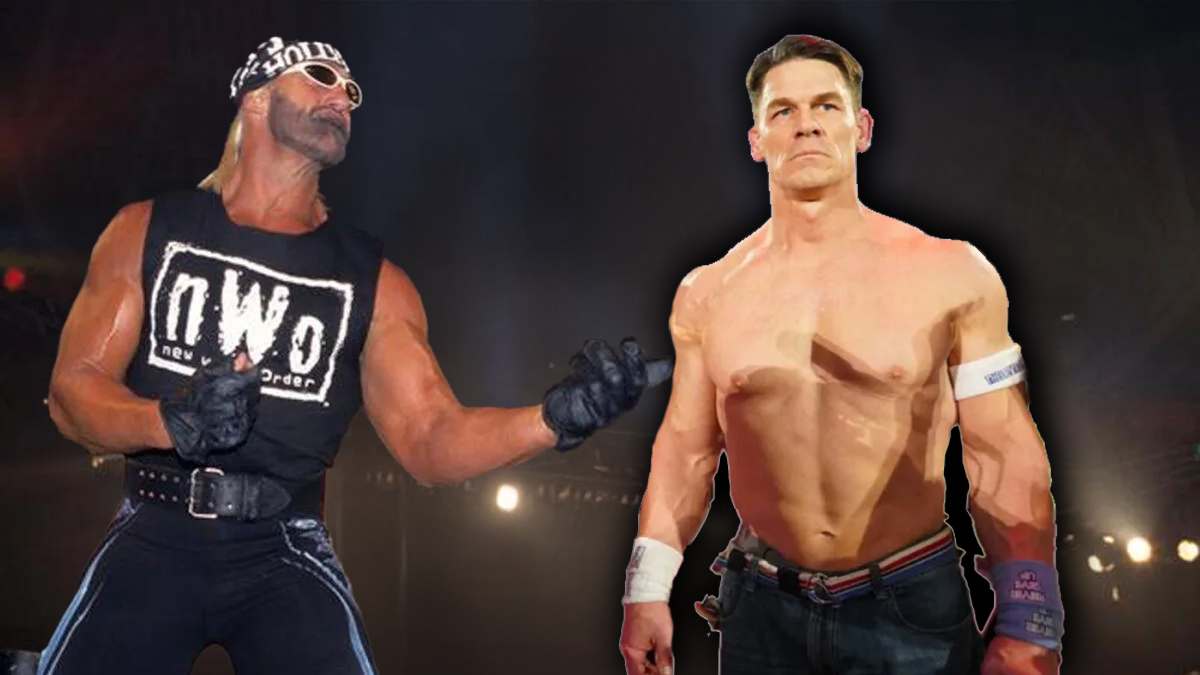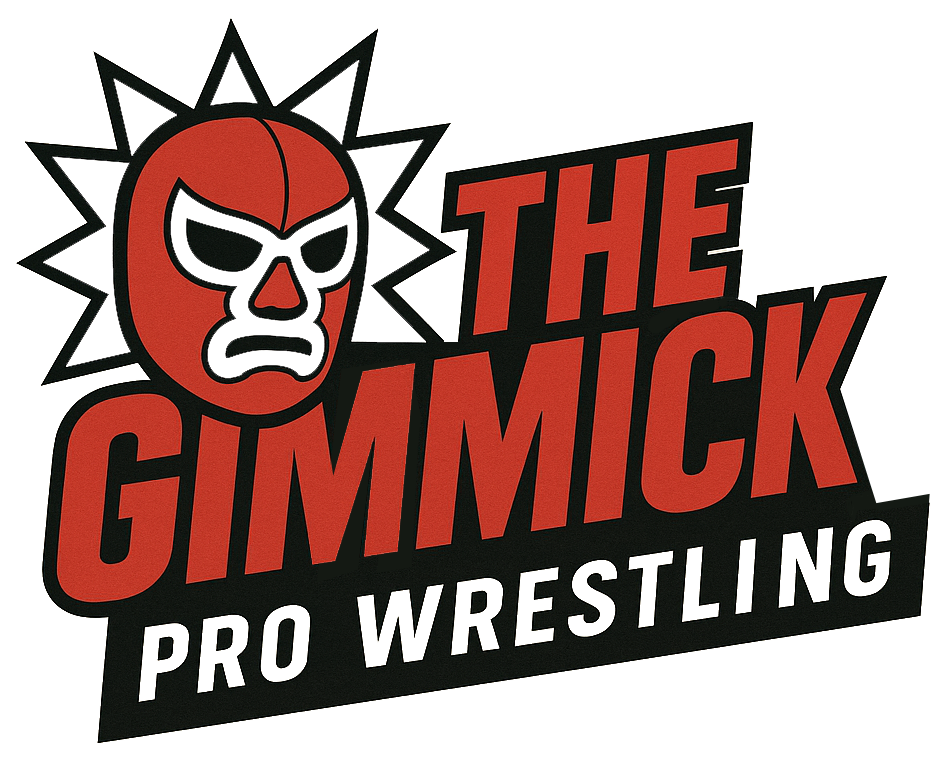Now Reading: Icons in the Dark: Comparing John Cena’s 2025 Heel Turn to Hulk Hogan’s 1996 Shockwave
-
01
Icons in the Dark: Comparing John Cena’s 2025 Heel Turn to Hulk Hogan’s 1996 Shockwave

Icons in the Dark: Comparing John Cena’s 2025 Heel Turn to Hulk Hogan’s 1996 Shockwave
In the world of professional wrestling, few moments resonate across generations like a truly shocking heel turn. When a beloved hero flips the script, betraying everything fans thought they knew, the industry shifts—and history is made. Two moments, separated by nearly three decades, now stand as monumental pivots in wrestling storytelling: Hulk Hogan’s 1996 turn at WCW’s Bash at the Beach, and John Cena’s long-awaited descent into darkness in 2025.
Each turn redefined a company, reframed a legend, and challenged what it meant to be the face of a wrestling empire. But how do they really compare? Which was more effective? More shocking? More memorable?
Let’s break it down.
The Setups: Legends at a Crossroads
By mid-1996, Hulk Hogan was running out of road. His red-and-yellow babyface persona—once beloved by children and merch machines alike—had grown stale with aging fans and a shifting wrestling culture. WCW, engaged in a fierce battle with WWE for ratings dominance, needed a jolt. Enter the New World Order.
Hogan’s heel turn, aligning with Scott Hall and Kevin Nash at Bash at the Beach, was not just a storyline shift—it was an industry earthquake. The immortal babyface embraced arrogance, ego, and villainy in one dramatic leg drop heard ’round the world. Trash filled the ring. Commentators were speechless. Wrestling, quite literally, had changed overnight.
Fast-forward to 2025. John Cena, a man often dubbed the modern-day Hogan, had flirted with heel territory for nearly two decades. Fans had begged for it. Fantasy bookings had predicted it. But the clean-cut, “Never Give Up” face of WWE never wavered—until now. At Saturday Night’s Main Event, Cena turned heel in what may be his final run with the company. The twist? Rumors swirl that he’s not only turned, but is forming a modern incarnation of the NWO—with none other than Hulk Hogan himself as an advisor or even accomplice.
While Hogan’s heel turn shocked the world by blindsiding the audience, Cena’s has stunned them through payoff. It’s the culmination of a slow-burn character arc — one where the hero’s fall feels inevitable and tragic, not just dramatic.
While Hogan’s heel turn shocked the world by blindsiding the audience, Cena’s has stunned them through payoff. It’s the culmination of a slow-burn character arc — one where the hero’s fall feels inevitable and tragic, not just dramatic.
The Character Shift: Redesigning the Hero
When Hogan turned heel, the transformation was absolute. Gone was the finger-wagging good guy. In his place stood “Hollywood” Hogan—decked out in black and white, cutting venomous promos, dripping in self-importance. He turned the NWO into a cult of cool villains. His style, mannerisms, and promos changed immediately, and he relished every second of it. The real-life Hogan had always had a streak of ego, but now he had the character license to amplify it—and he never looked back.
Cena’s turn, on the other hand, is more subtle and layered. Rather than a complete aesthetic reboot, it’s a darker, manipulative evolution of his character. Think less “Thuganomics” and more corporate puppet master—a veteran who claims he knows what’s best for the industry and is willing to break rules and alliances to preserve his legacy. He still quotes his old slogans—but with irony. He still wears his colors—but now they represent control rather than hope.
There’s no “Hollywood Cena”—at least not yet. His heel persona operates in the moral gray. He’s not outwardly evil; he’s a hero who believes he’s above the code he once championed. And if Hogan’s turn was explosive, Cena’s is surgical—precise, methodical, and psychologically unsettling.
The Reactions: Audience Shock vs. Audience Satisfaction
Hogan’s heel turn didn’t just surprise people—it enraged them. Fans threw garbage in the ring. Children cried. Lifelong Hulkamaniacs walked away in disbelief. The industry was still kayfabe-driven in many corners, and the betrayal felt personal. “You can stick it!” Hogan told the crowd in his first heel promo, and the crowd believed he meant it.
Yet that heel turn became the hottest act in wrestling. NWO shirts flew off shelves. WCW Nitro surged in the ratings. Hogan’s reinvention rejuvenated a career that had peaked years prior.
Cena’s turn, in contrast, was met with a stunned kind of satisfaction. The crowd reaction was mixed: cheers from longtime detractors, shocked gasps from loyal fans, and intrigue from nearly everyone. For years, fans had fantasy-booked heel Cena. By the time it finally happened, it felt like witnessing history that had been prophesied but never fulfilled.
Social media exploded. “We waited 15 years for this,” one tweet read. WWE’s YouTube video of the moment hit 10 million views in less than 24 hours. While the crowd didn’t throw trash in the ring, they did throw their full attention behind what came next.
The reactions speak to different cultural eras in wrestling. Hogan’s turn was a betrayal. Cena’s was a revelation.
The Impact: Industry Shifts and Long-Term Influence
Hogan’s heel turn gave birth to the NWO—arguably the most influential faction in pro wrestling history. It shifted the balance of power in the Monday Night Wars, led WCW to 83 consecutive weeks of ratings dominance, and inspired decades of heel factions across multiple promotions. The NWO was more than a storyline—it was a movement. Hogan’s turn elevated Hall and Nash, defined WCW’s identity, and forced WWE to evolve in response.
Cena’s heel turn is still playing out, but the early signs are significant. It’s already reframing his legacy, which had long been divided between fans who loved his message and those who found him stale. By finally flipping, Cena has opened the door to elevate young talent in a new way—as a villainous mentor or dominant threat. The rumored NWO revival could become the factional war WWE has lacked in recent years.
While Hogan’s turn was about disrupting the present, Cena’s feels like a reflection on the past. It’s less about shocking the system and more about completing a long-unfinished character arc. And if he’s indeed on his last run, the timing adds emotional weight. Hogan’s turn saved WCW. Cena’s might solidify his place as the most adaptable main-eventer in WWE history.
The Differences: Context, Culture, and Timing
Several key differences make these two heel turns unique.
1. Era and Media Landscape
In 1996, wrestling existed in a largely cable-TV world. Kayfabe still mattered. Hogan’s turn was reported on TV and in magazines—but not dissected instantly across a million screens.
By 2025, Cena’s turn played out in real time on Twitter, TikTok, YouTube, Reddit, and podcasts. Every facial expression was freeze-framed, every promo line was debated. Cena’s heel work is under constant, immediate scrutiny, which makes it harder to maintain mystery—but also more immersive for fans.
2. Fan Expectations
Hogan’s heel turn was a true swerve. While there were hints, few truly believed he would turn his back on Hulkamania.
Cena’s turn has been anticipated since 2006. It became a “will they or won’t they” saga that rivaled some of TV’s greatest slow-burn storylines. When it finally happened, fans weren’t shocked it occurred—but they were shocked at how it was executed. The payoff was the point.
3. Career Context
Hogan turned heel in his mid-40s, at the tail end of a tiring run, but still as an active full-timer.
Cena is now a Hollywood star and semi-retired wrestler. His appearances are special attractions. That means his heel turn is likely part of a short final arc, giving it more narrative importance—but less week-to-week presence.
Which Heel Turn Is More Memorable?
This is the million-dollar question. For many fans, Hogan’s turn is the single most important moment in wrestling history. It altered the course of two major companies, legitimized WCW as a threat, and created a template for all future faction-led storylines. Without that moment, there’s no Monday Night War, no Attitude Era, no DX, no Austin vs. McMahon.
But Cena’s turn, while perhaps not as business-defining, is arguably more poetic. It marks the culmination of a 20-year journey. It turns the eternal role model into a morally ambiguous manipulator. It’s not just a wrestling turn—it’s a cultural reckoning. Cena was the last white-meat babyface. Now, he’s something else entirely.
So which is more memorable?
If we’re talking shock factor and legacy impact: Hogan.
If we’re talking emotional payoff and character evolution: Cena.
But in truth, the most memorable heel turn may not be a competition—it may be a lineage. Cena’s turn only has this weight because Hogan did it first. The two are forever linked now, especially with NWO rumors swirling and both men involved in this story’s newest chapter.
The Darkness Within the Icons
Professional wrestling thrives on reinvention. Heroes fall. Villains rise. And sometimes, the people we thought we knew the best reveal their truest selves under the brightest lights.
Hulk Hogan’s 1996 heel turn will forever be the prototype—the loudest, boldest betrayal in wrestling history. But John Cena’s 2025 turn is its introspective mirror—a turn born not of shock, but of narrative depth, legacy exploration, and long-awaited payoff.
Both reshaped wrestling. Both changed lives. And both prove that in this world, no hero stays pure forever.



